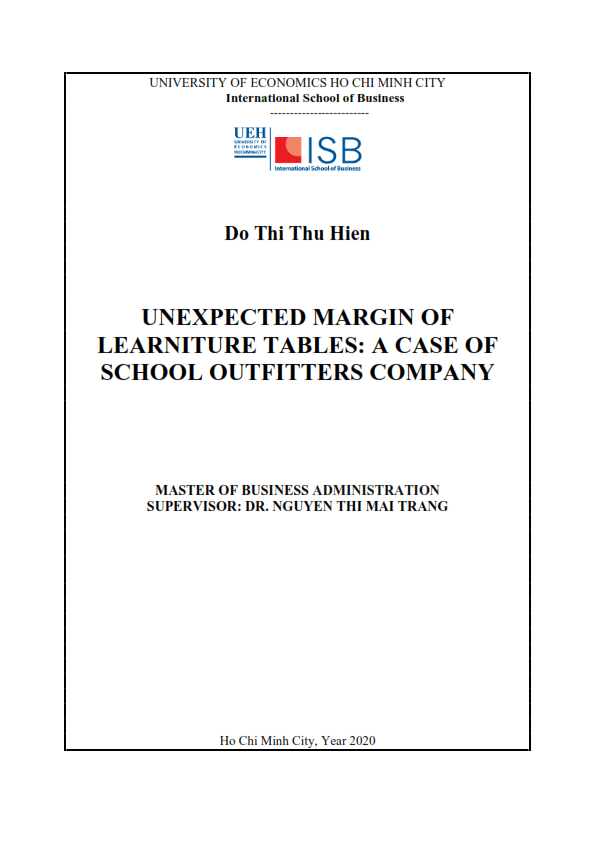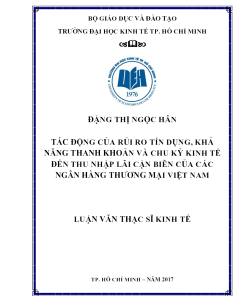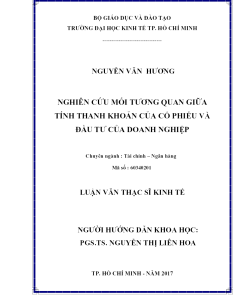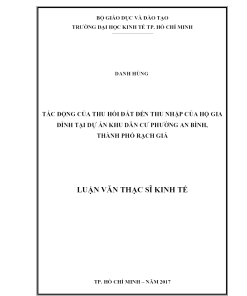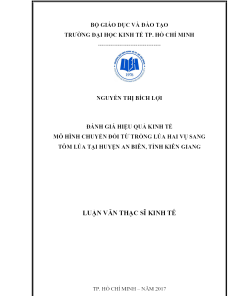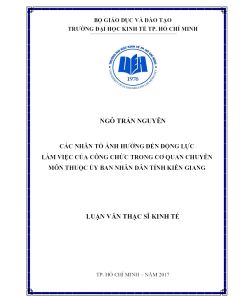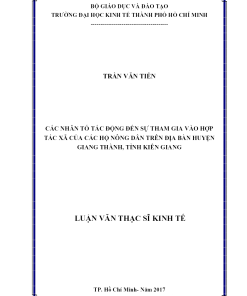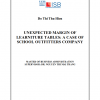- Giảm 10% phí tải tài liệu khi like và share website
- Tặng 1 bộ slide thuyết trình khi tải tài liệu
- Giảm 5% dịch vụ viết thuê luận văn thạc sĩ của Luận Văn A-Z
- Giảm 2% dịch vụ viết thuê luận án tiến sĩ của Luận Văn A-Z
Unexpected margin of learniture tables: a case of School Outfitters Company
50.000 VNĐ
Download Master Thesis: Unexpected margin of learniture tables: a case of School Outfitters Company
Download Master Thesis: Unexpected margin of learniture tables: a case of School Outfitters Company
The United States (US) education market has been robust for more than twenty years. This includes the furniture, fixture and equipment industry also known as FFE. A core set of products within FFE are school chairs, desks, tables, and other staple products needed within any school classroom and building. The growth has been driven by student population growth, the need to replace old school buildings, and the belief that education pedagogies need to change. The student population has grown significantly and also there has been a significant increase in immigration. This increase in preschool to 12 grade students pushed the limits of the existing education infrastructure. That is, there have been more students than the existing school buildings could handle. Students no longer had a place to sit within existing classrooms. This forced temporary classrooms to be built and then completely new buildings to be built. Consequently, it caused the purchase of new FFE. At the same time, educators were rethinking the effectiveness of old teaching methods. The typical scenario of a lecture style classroom was no longer favored, no longer believed to be effective. Parents and teachers both started expecting education buildings and classrooms to look modern and use new teaching styles. New styles such as project based learning, collaborative learning, etc. were also driving the design and purchase of new FFE. These factors led to an increase in companies manufacturing and selling FFE. The nature of schools being distributed within urban and rural school systems across the US led to many small FFE dealers. Some manufacturers were well known and grew to supply the many FFE dealers. Overall, we can say the dealers (FFE sellers) were fragmented across the industry. There were only a few large dealers and a lot of small to medium sized dealers. The fragmented nature of the dealers created a lot of competition even with the growth in the school market. Dealers were often pushed to give lower prices to capture a customer’s order. This competition led to lower margin dollars in total. However most of the loss in margin happened with dealers, not with manufacturers. This forced innovations and difficult choices for their business models.
Keywords: Corporate profits, Profit, Corporate finance
The United States (US) education market has been robust for more than twenty years. This includes the furniture, fixture and equipment industry also known as FFE. A core set of products within FFE are school chairs, desks, tables, and other staple products needed within any school classroom and building. The growth has been driven by student population growth, the need to replace old school buildings, and the belief that education pedagogies need to change.
The student population has grown significantly and also there has been a significant increase in immigration. This increase in preschool to 12 grade students pushed the limits of the existing education infrastructure. That is, there have been more students than the existing school buildings could handle. Students no longer had a place to sit within existing classrooms. This forced temporary classrooms to be built and then completely new buildings to be built. Consequently, it caused the purchase of new FFE.
At the same time, educators were rethinking the effectiveness of old teaching methods. The typical scenario of a lecture style classroom was no longer favored, no longer believed to be effective. Parents and teachers both started expecting education buildings and classrooms to look modern and use new teaching styles. New styles
such as project based learning, collaborative learning, etc. were also driving the design and purchase of new FFE.
These factors led to an increase in companies manufacturing and selling FFE. The nature of schools being distributed within urban and rural school systems across the US led to many small FFE dealers. Some manufacturers were well known and grew to supply the many FFE dealers. Overall, we can say the dealers (FFE sellers) were fragmented across the industry. There were only a few large dealers and a lot of small to medium sized dealers.
The fragmented nature of the dealers created a lot of competition even with the growth in the school market. Dealers were often pushed to give lower prices to capture a
customer’s order. This competition led to lower margin dollars in total. However most
Unexpected margin of learniture tables a case of School Outfitters Company
of the loss in margin happened with dealers, not with manufacturers. This forced
innovations and difficult choices for their business models.
ACKNOWLEDGEMENTS
This study was conducted as my thesis for Master of Business Administration program. I would like to express my sincere gratitude to my supervisor Nguyen Thi Mai Trang for all of her encouragement, enthusiasm, continuous support, which helped me in all the time of research and writing this thesis.
My sincere thanks also goes to School Outfitters’ representatives for their continuous
support and encouragement, to my family and friends for greatly supporting me in completing this research.
TABLE OF CONTENTS
EXECUTIVE SUMMARY ………………………………………………………………………………1
ACKNOWLEDGEMENTS ……………………………………………………………………………..3
LIST OF TABLES…………………………………………………………………………………………..6
LIST OF FIGURES…………………………………………………………………………………………6
1. INTRODUCTION ……………………………………………………………………………………….7
1.1. The FFE industry (Furniture, fixture and equipment)……………………………………7
1.2. School Outfitters company………………………………………………………………………..8
1.3. School Outfitters competition ………………………………………………………………….10
1.4. Sales department ……………………………………………………………………………………12
2. PROBLEM CONTEXT ……………………………………………………………………………..14
2.1. FFE market situation ………………………………………………………………………………14
2.2. School Outfitters company situation and its business results ……………………….15
3. PROBLEM IDENTIFICATION…………………………………………………………………22
3.1. Possible problem 1: Unsuitable products for educational environment …………23
3.2. Possible problem 2: Learniture table’s starting margin % not large enough…..25
3.3. Possible problem 3: Learniture tables not being sold as expected…………………27
4. PROBLEM VALIDATION………………………………………………………………………..28
5. POTENTIAL CAUSES………………………………………………………………………………29
5.1. Potential cause 1: Sales representatives habitually offer discounted pricing to customers…………………………………………………………………………………………………….29
5.2. Potential cause 2: Sales representatives feel compelled to match competitor prices ………………………………………………………………………………………………………….30
5.3. Potential cause 3: Sales representatives are concerned about the quality of
Learniture tables…………………………………………………………………………………………..31
5.4. Potential cause 4: Sales representatives have too much visibility and control
with margin % ……………………………………………………………………………………………..32
5.5. Cause – and – effect tree …………………………………………………………………………35
6. CAUSE VALIDATION………………………………………………………………………………36
7. SOLUTION ……………………………………………………………………………………………….38
7.1. Uneffective implemented solution and evaluations …………………………………….38
7.2. The first alternative solution: No discounting allowed………………………………..39
4
7.3. The second alternative solution: Management controlled discounting…………..43
8. ORGANIZATION OF ACTIONS ………………………………………………………………49
9. CONCLUSION ………………………………………………………………………………………….52
10. SUPPORTING INFORMATION ……………………………………………………………..54
REFERENCES ……………………………………………………………………………………………..73
Unexpected margin of learniture tables a case of School Outfitters Company
LIST OF TABLES
Table 1. School Specialty’s annual report 2015 – 2017
Table 2. Top 10 largest US school districts
Table 3. Comparison between sales representative discounted margin and undiscounted margin
Table 4. Comparison between sales representative discounted margin and undiscounted margin including 20% sales loss
Table 5. Comparison between sales representative discounted margin and controlled margin
Table 6. Action plan
LIST OF FIGURES
Figure 1. North American addressable school furniture market
Figure 2. School Outfitters organization structure Figure 3. School Outfitters 2019 competition Figure 4. School Outfitters sales volume
Figure 5. FTE headcount and gross margin %
Figure 6. Hoshin charts – Examples of automated processes
Figure 7. Typical breakout of margin
Figure 8. Initial actual gross margin % including Learniture tables
Figure 9. Learniture table’s starting margin % as more products are added
Figure 10. Units sold of all Learniture tables
Figure 11. Margin % of Learniture table compared to vendor’s table
Figure 12. Margin % of sales representative orders compared to margin % of web orders
1. INTRODUCTION
1.1. The FFE industry (Furniture, fixture and equipment)
The education FFE industry can be considered to be fragmented, that there is only one large dealer in the industry. All the other companies are considered to be small to medium sized.
As defined by Hitesh Bhasin1
“The fragmented market is defined as a marketplace where no single organization has enough influence to move the industry in a single direction. Fragmented market consists of several small and medium organizations that compete with one another
and with large organizations, but there is no one single company that dominates the entire market.”
Using this definition, the size of dealers and their product offering in the PreKindergarten to 12th grade school market can be shown to be fragmented. There is only one large dealer which is School Specialty. However School Specialty is actually a combination of businesses such as curriculum, supplies, audio visual technology,
and school furniture. Its school furniture business is $190 million based on the published public annual report at the end of 2017.
Table 1. School Specialty’s annual report 2015 – 2017
Distribution revenues by product line
Fiscal Year Ended December 30,
2017
Fiscal Year Ended December 31,
2016
Thirty-Five Weeks Ended December 26,
2015
Fiscal Year
Ended April
25, 2015
Supplies $305,423,000 $315,986,000 $233,919,000 $314,615,000
Furniture 190,766,000 183,060,000 141,280,000 132,150,000
Instruction & Intervention 43,294,000 37,117,000 29,372,000 54,429,000
AV Tech 17,200,000 18,023,000 13,171,000 24,510,000
Planners 34,157,000 41,126,000 47,193,000 53,153,000
Freight Revenue 10,326,000 9,396,000 4,443,000 9,050,000
Customer Allowances/ Discounts (6,211,000) (5,868,000) (3,055,000) (4,133,000) Total Distribution Segment $594,955,000 $598,840,000 $466,323,000 $583,774,000
Curriculum revenues by product line
Science $63,428,000 $57,482,000 $37,955,000 $38,094,000
Total Curriculum Segment $63,428,000 $57,482,000 $37,955,000 $38,094,000
Total revenues $658,383,000 $656,322,000 $504,278,000 $621,868,000
(Source: School Specialty’s annual reports)
7
The school furniture market is estimated to be $4 billion to $5 billion between 2018 and 2022. With School Specialty being the largest dealer in the market, it has less than
5% of the total market. This matches the definition of a fragmented market – no one dealer has a significant portion or control of the market.
Unexpected margin of learniture tables a case of School Outfitters Company
Figure 1. North American addressable school furniture market
(Source: Global School Furniture Market 2017 – 20212)
1.2. School Outfitters company
School Outfitters started in 1998 as a very small furniture, fixture, and equipment (FFE) dealer. It was created just before the onset of the Internet being used for retail sales. It offered a typical assortment of FFE products such as school chairs, teacher chairs, school desks, and whiteboards, that is similar to most dealers at the time. It reached customers by sending FAXes to each school and offering a paper catalog or products and prices. It targeted the largest school districts in the US as they had the most funding. School funding is largely determined by the number of students and the property values of the school’s community. The federal government provides a small
amount of funding for schools.
ThS08.150_Unexpected margin of learniture tables a case of School Outfitters Company
Table 2. Top 10 largest US school districts
Rank Name of district State Enrollment
1 New York City NY 989,012
2 Los Angeles Unified CA 653,826
3 City of Chicago (SD 299) IL 396,641
4 Dade County FL 356,233
5 Clark County NV 320,532
6 Broward County FL 262,666
7 Houston ISD TX 211,552
8 Hillsborough County FL 203,439
9 Orange County FL 187,092
10 Hawaii Department of Education HI 186,825
(Source: US Department of Education, National Center for Education Statistics3)
As a startup company, with only 2 employees, School Outfitters needed to first focus on “following the money”, that is targeting large districts. There was not, at that time, anything that specifically differentiated it from competitors.
At the time of using FAXes to market to schools, School Outfitters target customer was Kindergarten (K) to 12th grade (also known as K12) school districts. Today the target audience is only slightly changed by including Preschool, PreKindergarten (PreK) and continuing through today, School Outfitters target customer is public and private PreKindergarten to 12 grade (PK12) school districts.
School Outfitters was launched with just a few employees in 1998. Today it has approximately 170 employees. Additionally, it hires many temporary employees during the busy season, the peak buying season for schools. This is typically from June to August when schools receive their funding from the government, know how
many students they will have and can start purchasing for additional FFE, replacement
FFE, or small projects.
School Outfitters has a top level structure as shown in the organization chart below. It has very typical departments of accounting, customer service, human resources, information technology, marketing, sales, and supply chain.
Unexpected margin of learniture tables a case of School Outfitters Company
Figure 2. School Outfitters organization structure
1.3. School Outfitters competition
In the beginning, School Outfitters competition was against other dealers. These companies relied on suppliers to provide products that School Outfitters and its competitors would market and sell. In the early stages of the company, many competitors were still sending paper catalogs in the mail and faxes through phone lines. So the competition was small at first once School Outfitters started marketing and having a good ecommerce website. Many of the competitors were still doing things the old way (catalogs, faxes). Over time most of the competitors realized the Internet was a better way to get leads because customers were starting to shift away from catalogs and towards Internet search engines. Still, the competitors had to learn how to market online and School Outfitters was already doing it. Some dealers became proficient at marketing online and others did not.
Today the competition is different. School Outfitters gets products both from traditional suppliers and also has its private labels that it gets directly from manufactures. The chart below shows some of the competitors based on School
Outfitters model of being both a dealer and supplier.
ThS08.150_Unexpected margin of learniture tables a case of School Outfitters Company
The chart compares core assets and capabilities of the competitors. Some, like Virco, are only suppliers and do not have a good direct to purchaser model. Others, like School Specialty and Wayfair, are both dealers and suppliers similar to School Outfitters. Since School Outfitters lives in both worlds it’s useful to have context like this to understand their strengths.
The information in below chart is based on internal information, internal research to compare capabilities and assets. The important features to recognize are that (1) School Outfitters has a large assortment of product/solutions that gives customers a one-stop place to shop, (2) School Outfitters has private label products that customers buy and gives them good margin, (3) School Outfitters controls much of their supply chain, (4) and School Outfitters builds systems to give them efficient transactions and a lot of data to analyze. For the FFE school market, the biggest challenge for School Outfitters is the project business. The company does not do well with managing large
projects and the low margins they typically give.
Figure 3. School Outfitters 2019 competition
Unexpected margin of learniture tables a case of School Outfitters Company
(Source: Internal Data)
1.4. Sales department
The Sales team whose activities cover all of the US including east, west and central territory and is organizationally structured to have groups of sales representatives who report to three sales managers.
Vice President of Sales
Unexpected margin of learniture tables a case of School Outfitters Company
Unexpected margin of learniture tables a case of School Outfitters Company
East Territory Sales
Manager
Central Territory
Sales Manager
West Territory
Sales Manager
Sales
Representative
Sales
Representative
Sales
Representative
Unexpected margin of learniture tables a case of School Outfitters Company
Figure 4. Sales department organization chart
Unexpected margin of learniture tables a case of School Outfitters Company
The sales representatives are divided into two types – phone and chat sales representatives. The skills and knowledge of the phone and chat sales representatives is similar. Both types of sales representatives, chat and phone, must know the core education customer environments, typical solutions, and products well. Chat representatives tend to be better at written communication and phone representatives are better at verbal communication. Chat representatives must handle multiple customer chats at the same time. Phone sales representatives handle one customer phone call at a time. For both chat and phone representatives, there is a system to receive incoming customer requests and distribute them. The system also can record the conversation as the sales representative interacts with the customer.
Once a sales representative receives an incoming customer request, they ask basic questions to understand who the customer is and to know if it’s a new or existing customer. The sales representative searches for the customer name or phone number in the order taking system. If it’s an existing customer then the sales representative finds the customer record to review past quotes and orders to understand the customers history with School Outfitters. Then a new quote is created.
The sales representative independently talks/chats with the customer to understand their needs. School Outfitters trains sales representatives about education environments, solutions, and products. Sales representatives should demonstrate expertise to give customers confidence with being guided by the representative. As the conversation progresses the sales representative adds products to the quote. Once all items are added, there is a conversation about price for the products, shipping, and installation. The sales representative should understand concerns the customer may have about price, or competitor discounts, or budget constraints. The sales representative can fully see all costs and pricing elements of products in the system. The only pricing constraint the sales representative has in the system is they cannot have a negative margin.
Each month sales representatives and their managers meet to review their performance and skill. The sales manager will have already reviewed the sales representatives current month quotes and orders, recorded calls, and their current year performance.
ThS08.150_Unexpected margin of learniture tables a case of School Outfitters Company
The manager will then give feedback of additional training to help the sales representative improve. Moreover, the manager will give the sales representative concern about if the discounting is reasonable or not. This monthly meeting is the only way sales representatives receive feedback and quick training tips. There is no system or process that forces sales representative to include sales manager at the time a quote/order is being finalized with a customer. The sales representative will take the manager feedback and try to remember to apply it to future quotes/orders with customers.
2. PROBLEM CONTEXT
2.1. FFE market situation
In general, historically, the manufacturers control the products available in the market. The dealers are only selling what the manufacturers design and build. Typically the manufacturer is a well known company across the country, across educational customers. The dealer is often a regional company known only to the school systems within their state or within a small radius of the dealer’s location. The suppliers/manufacturers may have a well known brand but they also are in competition. Their product assortment is usually narrow and overlaps with the other suppliers/manufacturers. There is usually not much to give them a lead over their competition.
Otherwise, the market fragmentation (as discussed in 1.1) means dealers do not have significant control of product cost, customer pricing and margin. There is a constant price competition that gives customers control over product pricing. Dealers typically do not own product manufacturing and selling, they only get part of the available margin in each product. The manufacturer keeps a significant part of the available margin. When competitive price pressure occurs, typically the dealer absorbs it. The manufacturer has many dealers to sell their products and they have some brand recognition, therefore they have more control. The stronger position of the suppliers/manufacturers pushes the price pressure to the dealer to accept lower
margins.
Mr. David Lewis – Chief Innovation and Marketing Officer said that
Historically there is a separation of dealers and suppliers/manufacturers. This industry has a lot of fragmentation – there are a lot of dealers and a small number of suppliers/manufacturers. The competition with dealers forced customer pricing to be lowered. However, suppliers/manufacturers held their costs mostly constant. So the dealers had to reduce their overall margin.
2.2. School Outfitters company situation and its business results
2.2.1. School Outfitters revenue growth
Unexpected margin of learniture tables a case of School Outfitters Company
School Outfitters, as a dealer amongst many competitors, faced a problem of tight margins. The company has grown significantly in revenue, customers, and internal staff. The product assortment has grown to provide better choices for customers. In general, it can be said School Outfitters is successful so far. However the issue of tight margins from selling only other suppliers products continued even with the success
and growth.
Unexpected margin of learniture tables a case of School Outfitters Company
Ms. Michelle Booher – Sales Manager stated that
School Outfitters has a good culture and helps educators. It’s a strong company in the furniture education market. We focus on doing the right things for customers, providing a high quality solution, product, and service. Many people in the company are supportive of educators and want to help them get the best results for students by having great educational environments. We have pretty good customer retention and a great NPS (Net Promoter Score).
Figure 5. School Outfitters sales volume
(Source: Internal Data)
Unexpected margin of learniture tables a case of School Outfitters Company
School Outfitters business model is people intensive, high touch. The company’s growth and many manual activities require more people, higher full-time equivalent (FTE) headcount. More people were required to continue to handle difficult tasks so customers do not need to do them. Other dealers required customers to manage issues with suppliers/manufacturers and with carriers. School Outfitters model manages issues for the customer so the customer can focus on other parts of their job.
The chart below represents FTE headcount increases as gross margin % increases
Figure 6. FTE headcount and gross margin %
(Source: Internal Data)
2.2.2. Technology to be efficient
School Outfitters realized their business model required a lot of activities and management of documents. They recognized to be more operationally efficient. In fact, many software system changes were completed to reduce manual workload at School Outfitters. The company created software to better integrate the website with the ERP (Enterprise Resource Planning) system, used EDI (Electronic Data Interchange) to integrate with suppliers and carriers, creates systems to automatically finalize orders, to automatically approve purchase orders (POs) and send them to suppliers, and many more processes. Still the number of activities grew as the
company grew and orders became more complex such as needing installation services. The technology changes did help but could not offset the need for people to perform many activities.
By terming ‘technological enabler’, Clayton, Jerome and Jason4 agreed that
sophisticated technology whose purpose is to simplify, provides solution to settle down problems that previously required innovation.
17
William and Phillip17 also stated that the innovation and intensive utilization of technology have played a vital role for industrial existence, the high standard of living, leisure increasing and the competitive advantage in world trade. They
demonstrated by investing more heavily in science and technology, the higher rates of new product innovation and greater infusion of technology can be achieved then to improve productivity.
Below Hoshin charts represent for the proportion of activities which are automatically done by the system.
Approximately 98% of purchase orders automatically approved by the system
Approximately 88% of purchase orders automatically sent to suppliers and warehouses
Approximately 100% of carrier invoices automatically received and imported
Unexpected margin of learniture tables a case of School Outfitters Company
| Nơi xuất bản | International School of Business (ISB), Trường Đại học Kinh Tế TpHCM |
|---|---|
| Chuyên Ngành | |
| Loại tài liệu | |
| Ngôn ngữ | |
| Năm |




